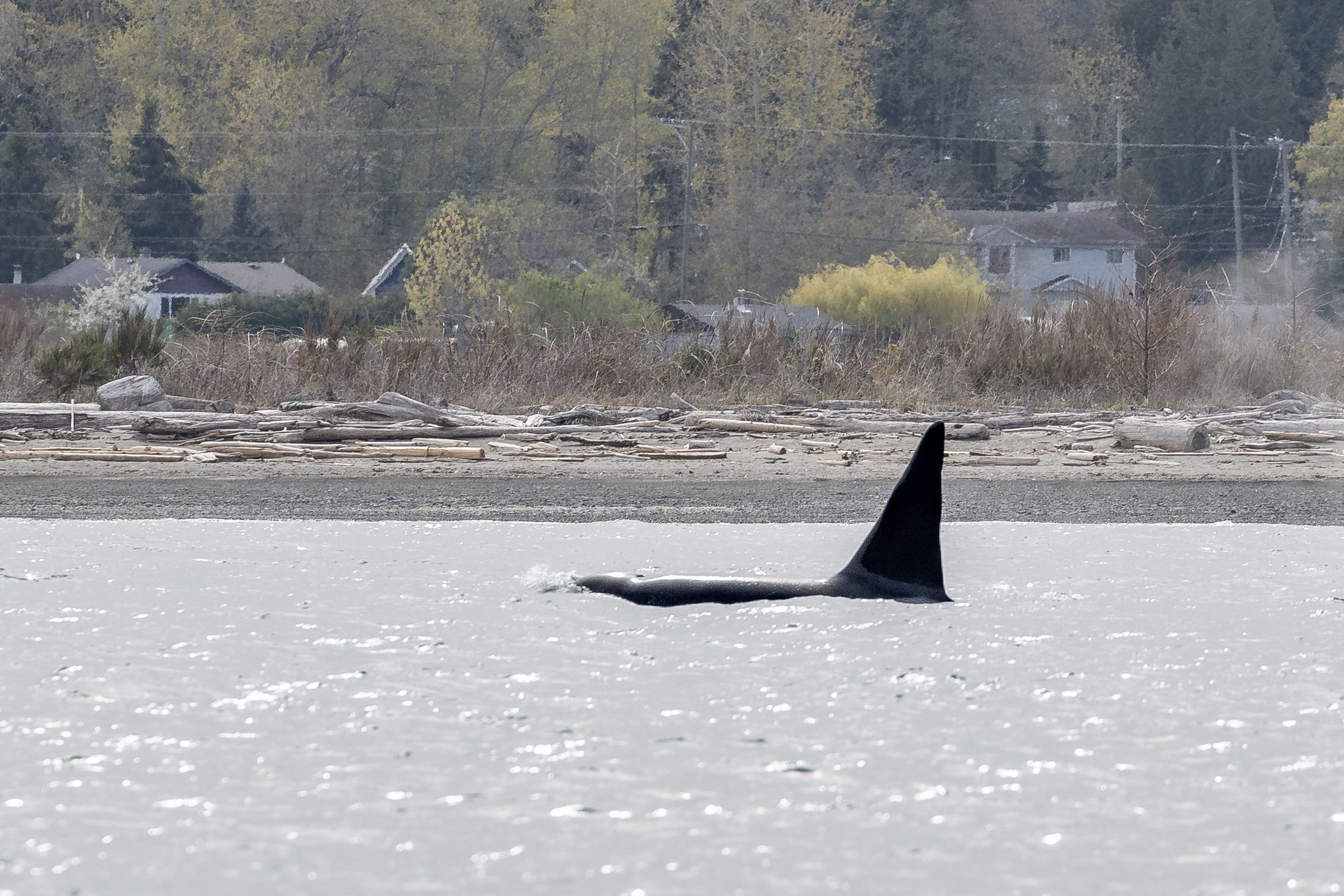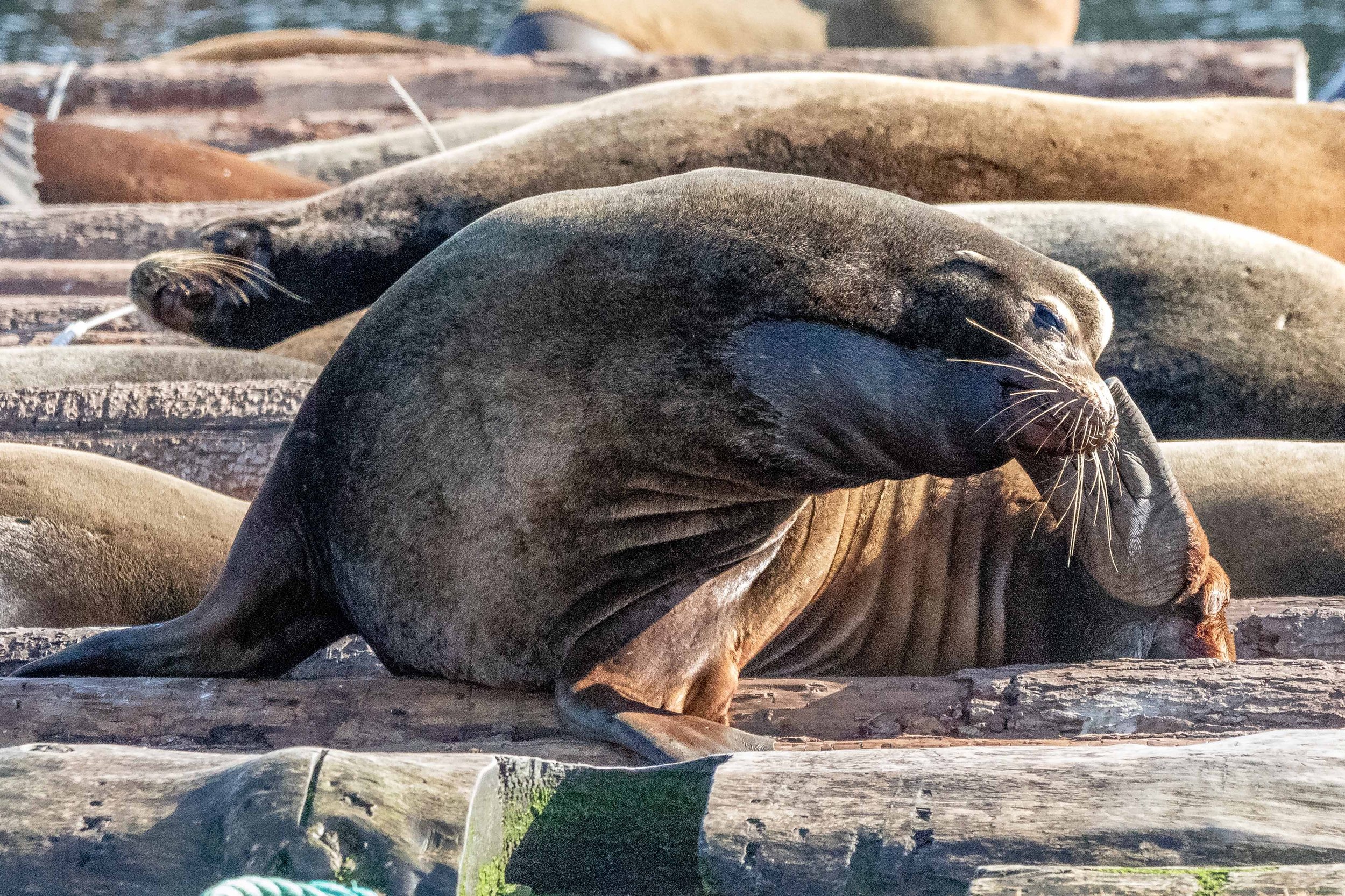April 5, 2024 - T018 and T019C by North Saanich
The sun was shining as we pushed off the dock and started our journey southbound today. While there were no early morning reports, there had been several sightings throughout the area in the past few days. We had two boats out, our Semi-covered vessel Kula and our Open vessel Keta, so they split apart to cover as much ground as possible. All of our whales are free of trackers and tags so you never know where they will show up! Because of this, travel time varies drastically from trip to trip so we never know ahead of time how long we will be out there.
After searching for a while, we were informed of an orca sighting in the Strait of Georgia. We exited Active Pass and started making our way up to this sighting, but these whales were soon identified as the Southern Resident Killer Whales (SRKW) - a critically endangered population which we do not watch. The longevity of the ecotype is very important to us, so as a company we have been proud to only ever watch healthy growing populations of whales. Once we knew they were the SRKW we left them behind to continue their foraging undisturbed, hopeful that we could find other whales elsewhere.
After departing them, we turned back into the Southern Gulf Islands to continue our search. Shortly after we were back inside we caught word of a pair of Transient orca travelling together outside North Saanich. After a few minutes with them, we were able to get some good ID shots and identified this duo as half of the T018 matriline:
T018 Esperanza ♀ (≤1955)
T019C Spouter ♂ (2001)
Today these two were travelling separately from the other half of the pod. This pod has taken to splitting in half fairly regularly in the past few years. While we are unsure why they do this, they tend to get back together shortly after. T019C Spouter was busy travelling closer to the shoreline while T018 Esperanza was further out in open waters.
These two were busily travelling along today. They likely were searching for another seal to hunt, as orca need to eat a lot of food every day to keep their weight up. Between these two, they likely need around 600-800 lbs of food per day, which is roughly 3-4 seals per day! That’s a lot of hunting!
After departing from this duo, we turned back towards Nanaimo. It was a long trek back to home port, but you have to go where the wild whales take you! On our way back we went up the eastern side of Saltspring Island, through picture-perfect Sansum Narrows and up into Stuart Channel.
Photos by Marine Naturalists Cheyenne Brewster and Vanessa Vereschahen.
T019C Spouter crashing through the water. Photo by Vanessa Vereschahen.
T019C Spouter’s tall but wiggly dorsal fin. Photo by Vanessa Vereschahen.
T018 Esperanza was sitting very low in the water, only ever showing her dorsal fin to us. Photo by Vanessa Vereschahen.
A close up shot of T018 Esperanza’s distinct dorsal. Photo by Vanessa Vereschahen.
T019C Spouter travelling close to shore. Photo by Cheyenne Brewster.
A cormorant drying off in the sun. Photo by Cheyenne Brewster.
A Rhinoceros Auklet in breeding plumage. Photo by Vanessa Vereschahen.
This pair shows off the Rhinoceros Auklet’s famous “horn” very well. Photo by Vanessa Vereschahen.
A Steller sea lion watching us! Photo by Vanessa Vereschahen.
Fins up! Photo by Vanessa Vereschahen.
Photo by Vanessa Vereschahen.
Look at how fluffy they are! Photo by Vanessa Vereschahen.
Our sea lions are rarely a peaceful species. Photo by Vanessa Vereschahen.
Photo by Vanessa Vereschahen.
Photo by Vanessa Vereschahen.
When this sea lion dove down into the water, it almost looked like a porpoise with its tail up in the air! Photo by Cheyenne Brewster.
A raft of sea lions in the water, with some curious sleepy seals behind them. Photo by Cheyenne Brewster.
Two ferries pass each other in Active Pass. Photo by Cheyenne Brewster.


















